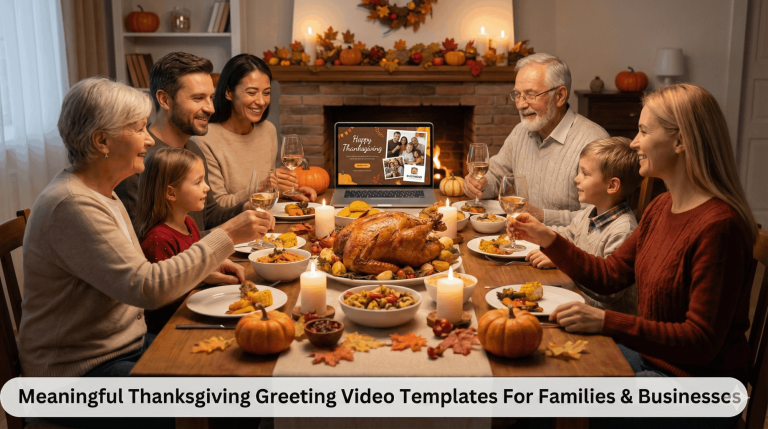
How to Effectively Promote Your Real Estate Video Listing
With so much competition in real estate these days, you already know that you need to stand out from the crowd. Even during the pandemic, over 5.64 million homes were sold in 2020, that’s 300K more than in 2019.
How did the real estate market reach those numbers, despite the widespread lockdown? Realtors went online, showing off their homes across social media channels using real estate videos and other tools. Getting your listing seen by the right audience might be the hardest aspect of real estate, but if you’re able to take photos, videos, or virtual tours of your property, your job is halfway done.
The rest is up to the way you promote your video listing through the power of marketing. Whether your advertising tactics are running flat, or you need to start from scratch, consider these five tactics for success that will put your homes front-and-center for interested buyers.

What are buyers looking for in a property?
Buying a home takes time, as it’s often considered the biggest decision an adult can make, not to mention the most expensive. When a customer looks for a property, they want to envision a home they’ll live in for 5, 10, 20 years, or even their entire lifetime. You can’t easily replace a home.
In the Real Estate in a Digital Age report conducted by the National Association of Realtors, the researchers were able to compile these insights:
- 58% of potential real estate buyers find their dream home on a mobile device.
- 36% of homebuyers look at videos/house tours during their research.
- 44% of the home buying process begins by looking online for properties.
LinkedIn and Facebook are over-saturated with home advertisements, and most marketers typically avoid Pinterest and Instagram. However, if you do a simple search on either of these platforms, you’ll find that people are actively searching for listings on both.
While the concept of “standing out” is standard for most marketers, it’s challenging to do this in practice. However, there’s no need to worry because the following steps will help you do just that!
Decide who the target audience is for each real estate video
One of the best ways to market any product is to use emotional-based decision-making in your video marketing. In order to effectively do this, you must think in advance who your target audience will be for each real estate video listing you create. Your video engagement numbers will increase significantly if you understand what emotions play into buying a home. Here are some examples:
Clients who are tired of renting
A frustrated renter who has had one too many bad landlords will want to get out of their apartment quickly. A home is often equated with building a future, and running a listing that focuses on that good feeling will improve the likelihood a current renter will buy your house.
Buyers looking for a new investment opportunity
If the new homebuyer is more interested in creating a passive-income stream, highlight the amenities that would be attractive to young adults. In your video, show how close the property is to people without cars, like grocery stores, colleges, shopping, or various outdoor activities.
A young family looking for their new home
New families want to be close to family-specific amenities that don’t necessarily have to be within walking distance, unless it’s a school. Suburbs typically have a shopping center, so highlight being close to the highway, restaurants, movie theaters, or large grocery stores.
Emotions are integral to marketing, as 95% of all purchases are based on impulse or feeling.
Create original content that engages the viewer
While generic marketing tips are important, you still need to know how to market in a video format. As a positive, video marketing is one of the most preferred formats overall for customers, so you already have a leg up on the competition. However, video listings often intimidate real estate agents.
Why? Video marketing is time-consuming and pointless without crisp footage, a proper aspect ratio that includes desktop and mobile, and on-screen text that provides information about the property. Remember that with new online video-making tools like Promo, you can create a professional branded real estate video in just minutes.
Here are additional ideas for great real estate videos you can create:
- Interview Videos: Interviews past buyers to increase your reputation
- Q&A Videos: Answering questions about the property to clarify info
- Recap Video: Showing design trends or trendy decor options
- Home Advice Videos: Tips and tricks related to buying a home
- Special Offer Videos: Promote limited-time offers that promote the property
- Local Business Review Videos: Show off the neighborhood of a listing
- About Me Videos: An in-depth explanation about the realtor
- “How-To” or “Listicle” Videos: Best videos for excellent SEO ranking
- House Market Update Videos: Talk about the latest news related to housing
- Brand Promotion Videos: A high-production way to explain your business
These examples can be uploaded to video-sharing websites, like YouTube, YouTube Shorts, and social media. Real estate agents can turn these video ideas into less demanding forms of content, like blog posts, podcasts, infographics, reviews, ebooks, or images. As long as you’re making your content engaging and unique, you’ll have a higher chance of attracting new leads.
Use SEO tactics in your real estate videos
Search engine optimization is incredibly important in ensuring your video listing is seen because it goes beyond what you think your potential clients want. You’ll have to conduct research for your properties, and Google is a great place to start.
For example, if you’re selling a home in Toronto, search for “House in Toronto” on Google. In the section “People also ask,” you’ll see questions related to the price of the home:

If your video listing used keywords like “cheap, inexpensive, no-money-down,” you could double your video hits and expand your reach. At the bottom, you’ll see similar queries about cost:

A video listing that matches any of these related searches would see more traffic, even accounting for competition. Narrow searches help buyers find you even faster. For example, “House in Toronto” won’t get you as much traffic as “Cheap 2-Bedroom Home in North York” (North York being a subsection of Toronto that receives a lot of attention). If you are publishing videos to YouTube, make sure each video is optimized with the right YouTube tags.
Always use a call-to-action
All of your efforts will be pointless if you don’t ask your customers, viewers, or potential buyers to engage with your content. A call-to-action (CTA) can be as simple as asking your watchers to like and subscribe to your video channel or to share the video along if they found the content helpful.
Since you’re using an audio/visual format with video, you should take advantage of this by putting the CTA within the video instead of placing it in the sidebar. A recent study found that a video can get up to 380% more clicks with an audio CTA than when it’s written elsewhere. That same study concluded that informational videos are 144% more likely to convert. Never miss out on another marketing opportunity again by learning how to add audio to video and including audio CTAs in your content.
Using a specific call-to-action is necessary to reach these numbers, so either ask your viewers to “click here” in the CTA or to “speak to” the agent for updates on apartments in an area.
Use good software
Before you start marketing, it’s better to opt into multiple types of real estate software that can automate most of the busywork. For example, when you use Real Estate Transaction Management Software (like this one by Paperless Pipeline), you automate transaction management, which helps you stay on schedule with payments and much more.
Here are some other examples of ready-to-use software that can help your business:
- Home Valuation Software: Calculates what a home is truly worth.
- Electronic Signature Apps: Lets agents send the paperwork over electronically.
- MLS Interface Software: Allows you to access MLS without the lag.
- Virtual Tour Software: Helps clients see a home without an appointment.
- Customer Relationship Management Apps: Builds relationships with customers.
- Lead Generation App: Connects buyers with targeted real estate information.
- Marketing Apps: Automates lead generation, email marketing, and website tasks.
- Property Management Software: Shares retail-specific information between teams.
- Mapping Software: Gives accurate information of amenities surrounding a home.
- Accounting Software (like Paperless Pipeline): Manages expenses and revenue.
A well-stocked team is a proactive team, so set them up for success by purchasing the right software.
Successful video listing marketing
Video content is rapidly growing as a part of a successful social media strategy. As more real estate agents adopt this approach, it’s important for you to use this method to receive more engagement, especially as the COVID-19 pandemic has increased everyone’s online presence.
Successfully implementing these strategies will position you one step closer to improving your appearance in the marketing sphere and will help you boost your property listings’ performance across all channels.



